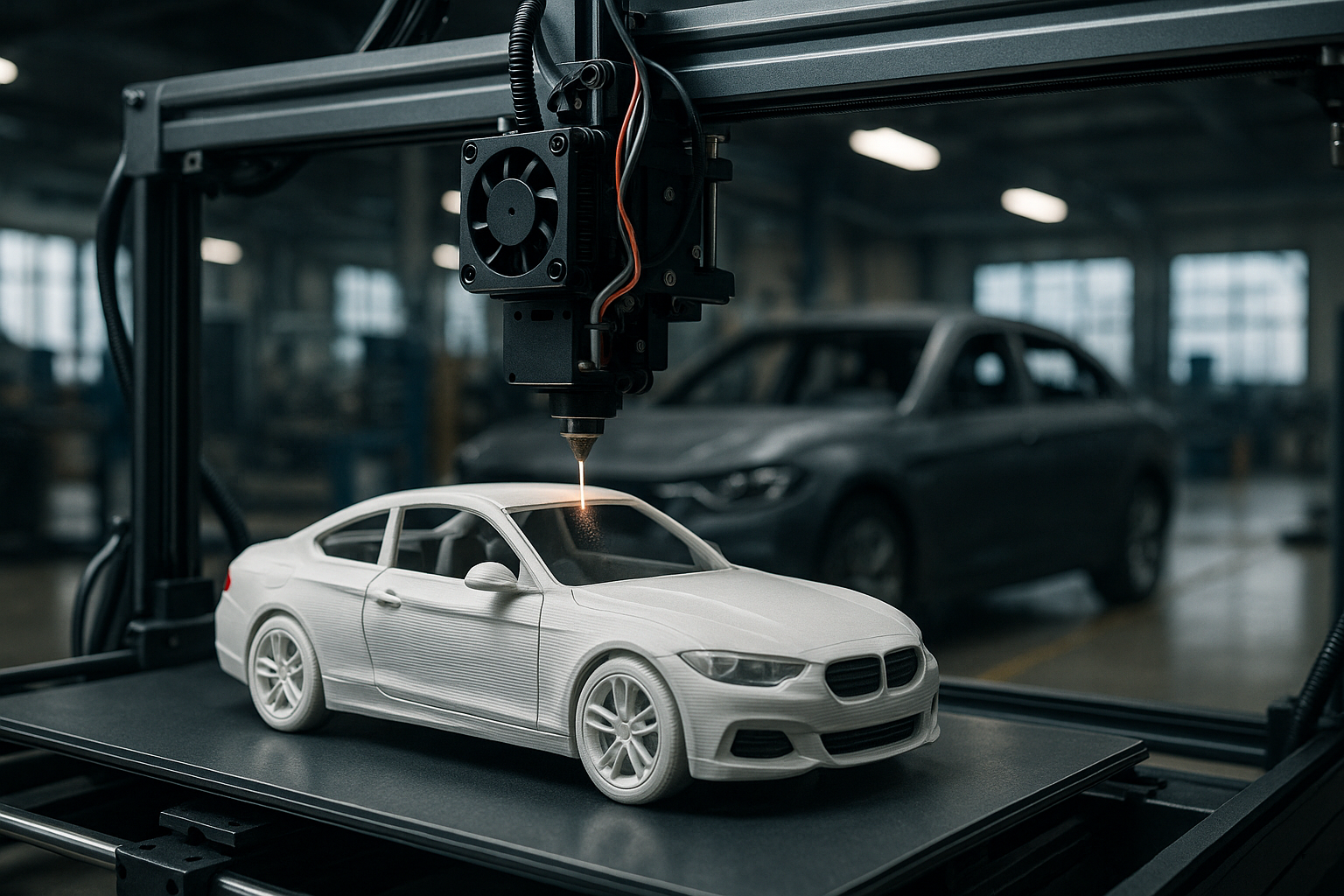Reimagining the Future: How 3D Printing is Transforming the Automotive Industry
The landscape of the automotive industry is experiencing a seismic shift, thanks to the innovative technology of 3D printing. This groundbreaking advancement is ushering in a new era that is poised to reshape car manufacturing, design, and customization in ways that were deemed impossible a few years ago.

The Advent of 3D Printing in Cars
3D printing, also known as additive manufacturing, was initially designed in the 1980s for rapid prototyping. It has since evolved into a game-changing technology applied across various industries, including the automotive sector. Early adopters of 3D printing in the automotive industry used it primarily for creating prototypes for car parts, enabling quicker and more cost-effective design revisions. However, the technology has significantly advanced, and its capabilities now extend far beyond prototyping.
Transforming Car Manufacturing
The traditional automotive manufacturing process is labor-intensive, time-consuming, and expensive. 3D printing, on the other hand, allows for quick and efficient production of complex parts. By building components layer by layer, 3D printers can create intricate designs that would be challenging or impossible with traditional manufacturing methods. This not only reduces the time and cost of production but also opens up a whole new world of design possibilities.
Driving Customization to New Heights
3D printing technology is also transforming the way cars are customized. With the technology’s ability to create complex shapes and structures, car manufacturers can produce highly personalized components tailored to individual customers’ preferences. This new level of customization is set to redefine the driving experience, allowing drivers to have cars that truly reflect their personality and style.
The Environmental Impact
Another significant impact of 3D printing in the automotive industry is its potential for environmental sustainability. The process produces less waste than traditional methods, as it uses only the necessary material for each part. Moreover, it allows for the production of lightweight parts, which can improve a vehicle’s fuel efficiency and reduce its carbon footprint.
Challenges and the Road Ahead
Despite its revolutionary potential, 3D printing in the automotive industry is not without its challenges. The technology is still evolving, and issues such as speed of production, material limitations, and high initial investment costs need to be addressed. However, as the technology continues to mature and overcome these obstacles, its adoption in the automotive industry is expected to accelerate.
3D printing is truly reimagining the future of the automotive industry. It offers an exciting glimpse into a world where cars are manufactured more efficiently, customized to the smallest detail, and have a significantly reduced environmental impact. While there are hurdles to overcome, the technology’s potential is undeniable, and its impact on the industry is set to be profound and far-reaching.




